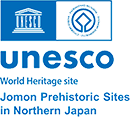About World Heritage Properties
What are World Heritage Properties?
World Heritage Properties are precious treasures, born from human history and the Earth itself, that have been handed down through the ages to the present. They are common legacies and heritages that all people living in the present world must pass on to future generations.
The World Heritage Convention (formally known as the Convention Concerning the Protection of the World Cultural and Natural Heritage) was adopted by the General Conference of the United Nations Educational, Scientific and Cultural Organization (UNESCO) in 1972. The purpose of this convention is to establish a framework for international cooperation and assistance to protect cultural and natural heritage sites from such threats as damage and destruction, and to preserve them as world legacies for humanity.
As of July 2019, the World Heritage List includes 1,121 properties (869 cultural, 213 natural, and 39 mixed). The number of States Parties is 193, and Japan ratified the World Heritage Convention in 1992.
Types of World Heritage Properties
There are three types of World Heritage Properties, which target real, tangible properties.
Cultural Heritage Properties
Monuments, groups of buildings, archaeological sites, cultural landscapes and other properties of Outstanding Universal Value
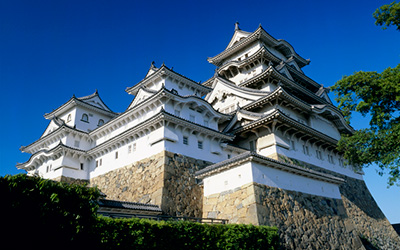
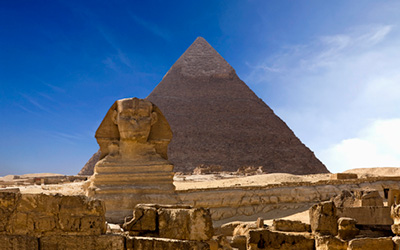
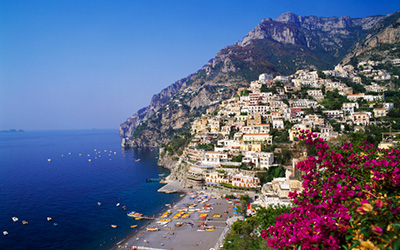
Natural Heritage Properties
Physiographical and geological formations, ecosystems, habitats of threatened animal and plant species, and other properties of Outstanding Universal Value

Photo courtesy of Nishimeya Village Office
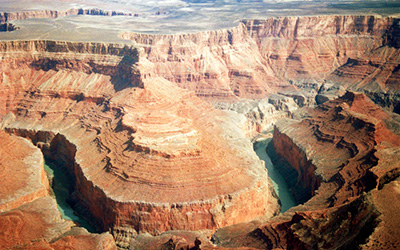
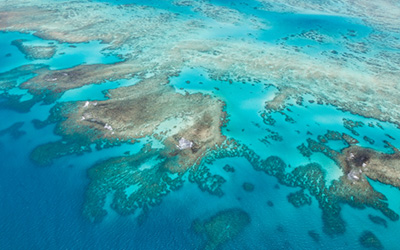
(Commonwealth of Australia)
Mixed Heritage Properties
Properties of both cultural and natural heritage value
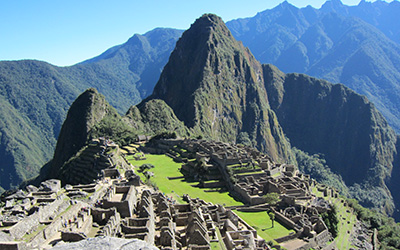
(Republic of Peru)
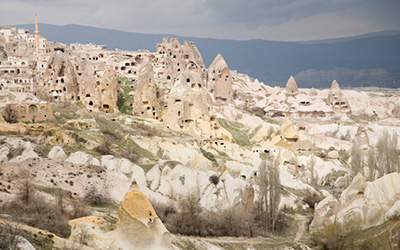
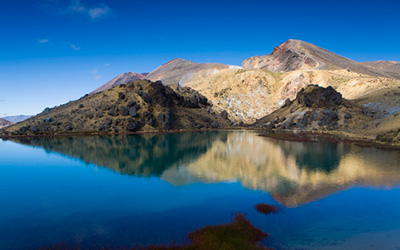
Steps for Inscription on the World Heritage List (for a Cultural Heritage)
Blue text: Status of the Jomon Prehistoric Sites
Submission of a proposal by local governments to the national government
Prefectural governments and municipalities jointly submit a proposal to the national government (Agency for Cultural Affairs) for a candidate World Heritage site.
- November 2006
A proposal for the Jomon Archaeological Sites in Aomori is submitted (Aomori Prefecture, Aomori City, Hachinohe City, Tsugaru City, Shichinohe Town).
A proposal for Stone Circles is submitted (Akita Prefecture, Kazuno City, Kitaakita City). - August 27 and 28, 2007
Agreement on a joint proposal is officially reached at the 11th Hokkaido and Northern Tohoku Governors’ Summit. - December 19, 2007
A proposal for the Jomon Archaeological Sites in Hokkaido and Northern Tohoku is submitted.
(Governors of Hokkaido, Aomori, Iwate and Akita prefectures)
Addition to the World Heritage Tentative List
The Agency for Cultural Affairs examines and selects proposals from local governments for listing on the World Heritage Tentative List.
- January 5, 2009
The property “Jomon Archaeological Sites in Hokkaido, Northern Tohoku, and other regions” is added to the World Heritage Tentative List.
Preparation of nomination
Preparations regarding the justification of Outstanding Universal Value (OUV) and thorough protection measures in Japan are made in order to meet the requirements for inscription on the World Heritage List.
- June 1, 2009
The Headquarters for World Heritage Registration Promotion for Jomon Prehistoric Sites and other bodies are established. - March 29, 2013
Proposals to serve as the basis for discussion on a nomination dossier for the Jomon Archaeological Sites are submitted. - July 24, 2013
The original draft of a nomination dossier for the Jomon Archaeological Sites is submitted to the Agency for Cultural Affairs. - March 27, 2015
A draft nomination dossier for the Jomon Archaeological Sites is submitted to the Agency for Cultural Affairs. - March 31, 2016
A revised draft nomination dossier for the Jomon Archaeological Sites is submitted to the Agency for Cultural Affairs. - March 31, 2017
A revised draft nomination dossier for the Jomon Archaeological Sites is submitted to the Agency for Cultural Affairs. - March 30, 2018
A revised draft nomination dossier for the Jomon Archaeological Sites is submitted to the Agency for Cultural Affairs.
Decision on nomination (Agency for Cultural Affairs, Japanese Government)
The National Government selects a property that is well prepared for nomination (one per year, in principle).
- (1) The Council for Cultural Affairs’ Subdivision on World’s Cultural Heritage and Subdivision on Intangible Cultural Heritage (decision on the nomination by the Agency for Cultural Affairs)
- (2) World Heritage Convention Ministries and Agencies Liaison Committee (decision on the nomination by the national government)
- July 19, 2018
The Council for Cultural Affairs’ Subdivision on World’s Cultural Heritage selects the Jomon Archaeological Sites as a candidate for nomination to the World Heritage List in FY 2018.
(On November 2, 2018, the Japanese government announced its decision to nominate a natural heritage site in FY 2018.) - January 23, 2019
The Council for Cultural Affairs’ Subdivision on World’s Cultural Heritage decides to extend its FY 2018 selection into FY 2019. - July 30, 2019
The Council for Cultural Affairs’ Subdivision on World’s Cultural Heritage selects the Jomon Archaeological Sites as a candidate for nomination to the World Heritage List in FY 2019. - December 20, 2019
The Cabinet approves the submission of a nomination dossier forthe Jomon Archaeological Sites to UNESCO.
Submission of a nomination dossier by the National Government to UNESCO
The Agency for Cultural Affairs submits a nomination dossier to the UNESCO World Heritage Centre.
- Submission of a nomination dossier (provisional) by the end of September
- Submission of a nomination dossier by February 1 of the following year
- January 1, 2020
The government submits the nomination dossier on the Jomon Archaeological Sites to UNESCO.
The official name of the nominated property: Jomon Prehistoric Sites in Northern Japan
On-site evaluation by a specialized body (in the fall of the year of nomination)
Assessors of the International Council on Monuments and Sites (ICOMOS) conduct an on-site evaluation mission and prepare an evaluation report for submission to the UNESCO World Heritage Centre.
- The on-site evaluation mission is conducted from September 4 to 15, 2020.
Deliberations and decision on inscription by the UNESCO World Heritage Committee (once a year in principle, in June or July in the year following the year of nomination)
Based on reports from ICOMOS, the World Heritage Committee deliberates and decides on whether nominated properties should be inscribed on the World Heritage List. (The World Heritage Committee consists of representatives from 21 States Parties, reviews the state of conservation, and decides on the inscription or removal of sites and extended sites on the World Heritage List and the List of World Heritage in Danger.)
- 2021 May 26
The International Council on Monuments and Sites (ICOMOS), an advisory body to UNESCO, recommends inscription of the Jomon Prehistoric Sites in Northern Japan on the World Heritage list. - 2021 July 27
In its extended 44th session, the UNESCO World Heritage Committee inscribes the Jomon Prehistoric Sites in Northern Japan on the World Heritage List.
Property name: Jomon Prehistoric Sites in Northern Japan (UNESCO World Heritage Centre)
Criteria for inscription on the World Heritage List
To be inscribed on the World Heritage List, a property must meet at least one of the following criteria prescribed in the Operational Guidelines for the Implementation of the World Heritage Convention to justify Outstanding Universal Value*. It must also meet the conditions of integrity and authenticity, and an adequate preservation and management system under the domestic laws of the States Parties has to be in place.
*Outstanding Universal Value (OUV)
Outstanding Universal Value means cultural and/or natural significance which is so exceptional as to transcend national boundaries and to be of common importance for present and future generations of all humanity.
Criteria for Inscription on the World Heritage List
| (i) | represent a masterpiece of human creative genius; |
| (ii) | exhibit an important interchange of human values, over a span of time or within a cultural area of the world, on developments in architecture or technology, monumental arts, town-planning or landscape design; |
| (iii) | bear a unique or at least exceptional testimony to a cultural tradition or to a civilization which is living or which has disappeared; |
| (iv) | be an outstanding example of a type of building, architectural or technological ensemble or landscape which illustrates (a) significant stage(s) in human history; |
| (v) | be an outstanding example of a traditional human settlement, land-use, or sea-use which is representative of a culture (or cultures), or human interaction with the environment especially when it has become vulnerable under the impact of irreversible change; |
| (vi) | be directly or tangibly associated with events or living traditions, with ideas, or with beliefs, with artistic and literary works of outstanding universal significance. (The Committee considers that this criterion should preferably be used in conjunction with other criteria); |
| (vii) | contain superlative natural phenomena or areas of exceptional natural beauty and aesthetic importance; |
| (viii) | be outstanding examples representing major stages of earth’s history, including the record of life, significant on-going geological processes in the development of landforms, or significant geomorphic or physiographic features; |
| (ix) | be outstanding examples representing significant on-going ecological and biological processes in the evolution and development of terrestrial, fresh water, coastal and marine ecosystems and communities of plants and animals; |
| (x) | contain the most important and significant natural habitats for in-situ conservation of biological diversity, including those containing threatened species of Outstanding Universal Value from the point of view of science or conservation. |
*Properties that meet criteria (i) – (vi) are inscribed as Cultural Heritage sites, properties that meet criteria (vii) – (x) as Natural Heritage sites, and properties that meet criteria for both Cultural and Natural Heritage as Mixed Heritage sites.
Integrity
Integrity is a measure of the wholeness and intactness of the natural and/or cultural heritage and its attributes. Examining the conditions of integrity, therefore, requires assessing the extent to which the property…
- includes all elements necessary to express its Outstanding Universal Value;
- is of adequate size to ensure the complete representation of the features and processes which convey the property’s significance;
- suffers from adverse effects of development and/or neglect.
Authenticity
Properties may be understood to meet the conditions of authenticity if their cultural value (as recognized in the nomination criteria proposed) is truthfully and credibly expressed through various attributes that include the following:
- form and design;
- materials and substance;
- traditions, techniques and management systems;
- location and setting;
- language, and other forms of intangible heritage;
- spirit and feeling; and
- other internal and external factors.
Protection and management system
The World Heritage Convention stipulates that the protection and management of World Heritage properties should ensure that their Outstanding Universal Value, including the conditions of integrity and/or authenticity at the time of inscription, are sustained or enhanced over time. Any property inscribed on the World Heritage List must meet the following three requirements:
- In Japan, the property has been designated (as an Important Cultural Property, Historic Site, Place of Scenic Beauty, etc.) by the Law for the Protection of Cultural Properties.
- A buffer zone has been provided to protect the property;
- A preservation and management plan has been formulated.
World Heritage Sites in Japan
Japan has 25 World Heritage sites: 20 Cultural Heritage sites and 5 Natural Heritage sites (as of July 2021).
Cultural Heritage
| Property name | Year of inscription |
|---|---|
| Buddhist Monuments in the Horyu-ji Area (Nara Prefecture) | 1993 |
| Himeji-jo (Hyogo Prefecture) | 1993 |
| Historic Monuments of Ancient Kyoto (Kyoto and Shiga prefectures) | 1994 |
| Historic Villages of Shirakawa-go and Gokayama (Gifu and Toyama prefectures) | 1995 |
| Hiroshima Peace Memorial (Genbaku Dome) (Hiroshima Prefecture) | 1996 |
| Itsukushima Shinto Shrine (Hiroshima Prefecture) | 1996 |
| Historic Monuments of Ancient Nara (Nara Prefecture) | 1998 |
| Shrines and Temples of Nikko (Tochigi Prefecture) | 1999 |
| Gusuku Sites and Related Properties of the Kingdom of Ryukyu (Okinawa Prefecture) | 2000 |
| Sacred Sites and Pilgrimage Routes in the Kii Mountain Range (Mie, Nara and Wakayama prefectures) | 2004 |
| Iwami Ginzan Silver Mine and its Cultural Landscape | 2007 |
| Hiraizumi – Temples, Gardens and Archaeological Sites Representing the Buddhist Pure Land (Iwate Prefecture) | 2011 |
| Fujisan, Sacred Place and Source of Artistic Inspiration (Shizuoka and Yamanashi prefectures) | 2013 |
| Tomioka Silk Mill and Related Sites (Gunma Prefecture) | 2014 |
| Sites of Japan’s Meiji Industrial Revolution: Iron and Steel, Shipbuilding and Coal Mining (Fukuoka, Saga, Nagasaki, Kumamoto, Kagoshima, Yamaguchi, Iwate and Shizuoka prefectures) | 2015 |
| The Architectural Work of Le Corbusier, an Outstanding Contribution to the Modern Movement (17 sites in seven countries, including Tokyo (National Museum of Western Art)) | 2016 |
| Sacred Island of Okinoshima and Associated Sites in the Munakata Region (Fukuoka Prefecture) | 2017 |
| Hidden Christian Sites in the Nagasaki Region (Nagasaki and Kumamoto prefectures) | 2018 |
| Mozu-Furuichi Kofun Group: Mounded Tombs of Ancient Japan (Osaka Prefecture) | 2019 |
| Jomon Prehistoric Sites in Northern Japan (Hokkaido, Aomori, Iwate and Akita prefectures) | 2021 |
Natural Heritage
| Property name | Year of inscription |
|---|---|
| Shirakami-Sanchi (Aomori and Akita prefectures) | 1993 |
| Yakushima (Kagoshima Prefecture) | 1993 |
| Shiretoko (Hokkaido) | 2005 |
| Ogasawara Islands (Tokyo) | 2011 |
| Amami-Oshima Island, Tokunoshima Island, Northern part of Okinawa Island, and Iriomote Island (Kagoshima and Okinawa prefectures) | 2021 |

